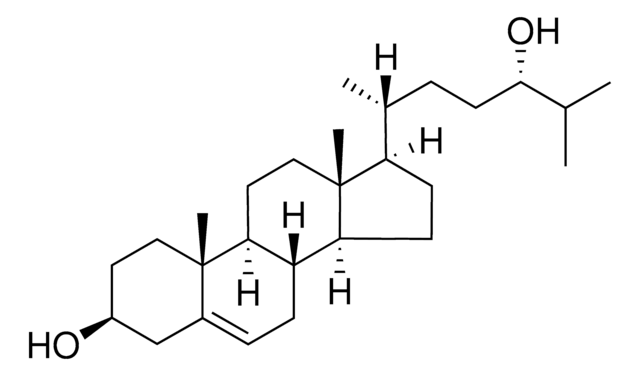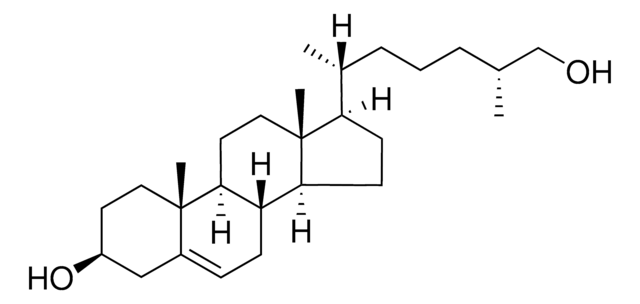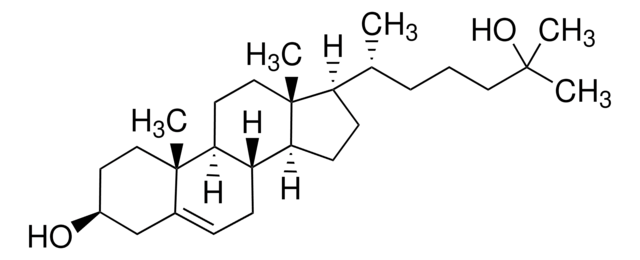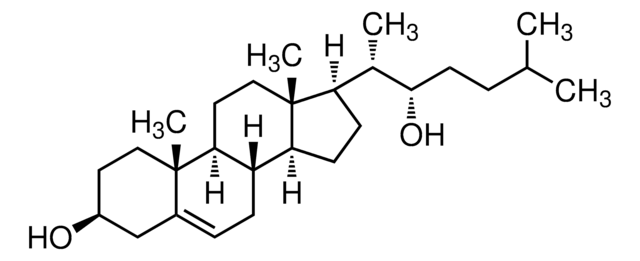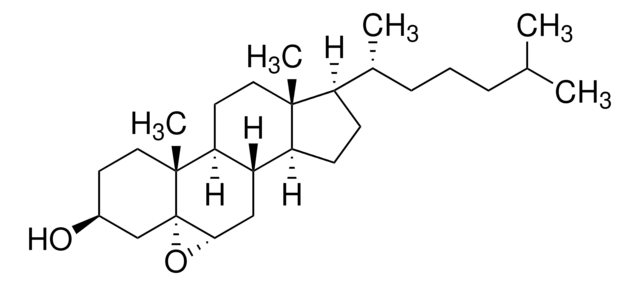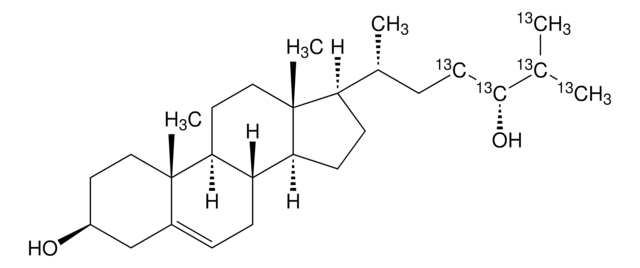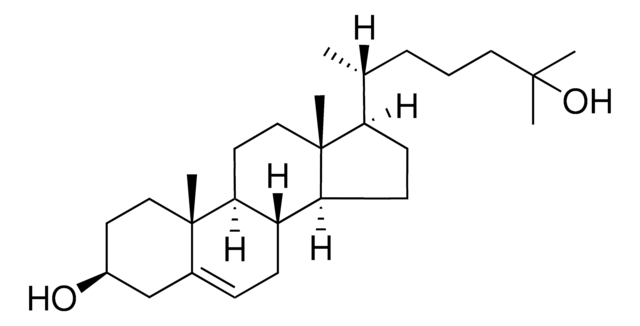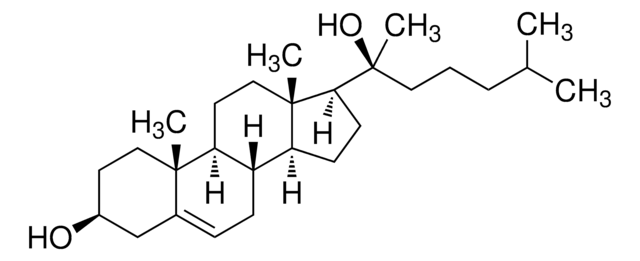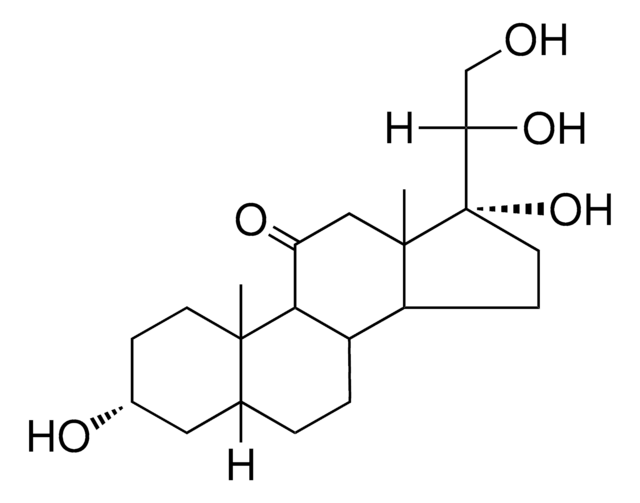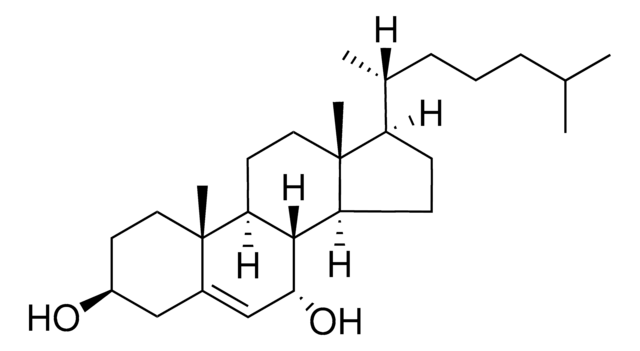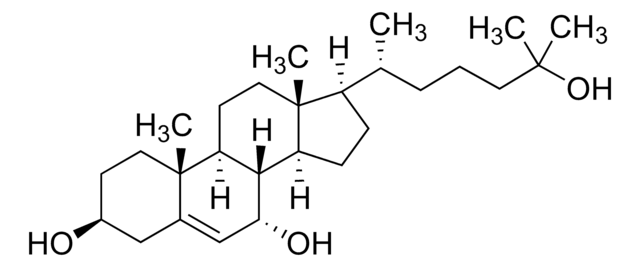SML1648
24(S)-Hydroxycholesterol
≥98% (HPLC)
Synonim(y):
24S-Hydroxycholesterol, 5-Cholesten-3β,24(S)-diol, Cerebrosterin, Cerebrosterol, Cholest-5-ene-3β,24-diol
About This Item
Polecane produkty
Poziom jakości
Próba
≥98% (HPLC)
Formularz
powder
aktywność optyczna
[α]/D -45 to -52°, c = 1 in chloroform-d
warunki przechowywania
desiccated
kolor
white to beige
rozpuszczalność
DMSO: 3 mg/mL, clear (warmed)
temp. przechowywania
−20°C
ciąg SMILES
O[C@H]1CC[C@@]2([C@@H]3[C@H]([C@H]4[C@@]([C@H](CC4)[C@@H](CC[C@H](O)C(C)C)C)(CC3)C)CC=C2C1)C
InChI
1S/C27H46O2/c1-17(2)25(29)11-6-18(3)22-9-10-23-21-8-7-19-16-20(28)12-14-26(19,4)24(21)13-15-27(22,23)5/h7,17-18,20-25,28-29H,6,8-16H2,1-5H3/t18-,20+,21+,22-,23+,24+,25+,26+,27-/m1/s1
Klucz InChI
IOWMKBFJCNLRTC-XWXSNNQWSA-N
Szukasz podobnych produktów? Odwiedź Przewodnik dotyczący porównywania produktów
Działania biochem./fizjol.
Kod klasy składowania
11 - Combustible Solids
Klasa zagrożenia wodnego (WGK)
WGK 3
Temperatura zapłonu (°F)
Not applicable
Temperatura zapłonu (°C)
Not applicable
Wybierz jedną z najnowszych wersji:
Certyfikaty analizy (CoA)
Nie widzisz odpowiedniej wersji?
Jeśli potrzebujesz konkretnej wersji, możesz wyszukać konkretny certyfikat według numeru partii lub serii.
Masz już ten produkt?
Dokumenty związane z niedawno zakupionymi produktami zostały zamieszczone w Bibliotece dokumentów.
Klienci oglądali również te produkty
Nasz zespół naukowców ma doświadczenie we wszystkich obszarach badań, w tym w naukach przyrodniczych, materiałoznawstwie, syntezie chemicznej, chromatografii, analityce i wielu innych dziedzinach.
Skontaktuj się z zespołem ds. pomocy technicznej